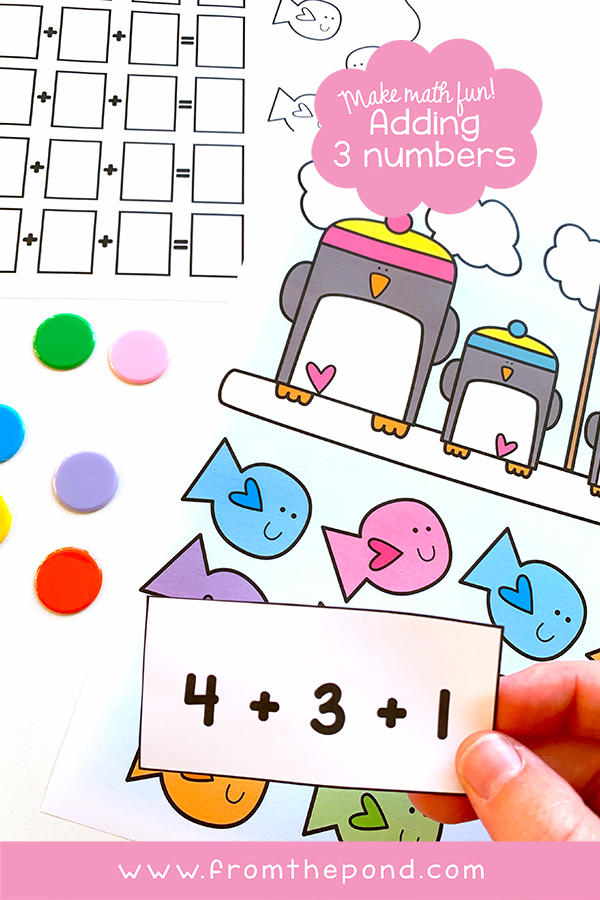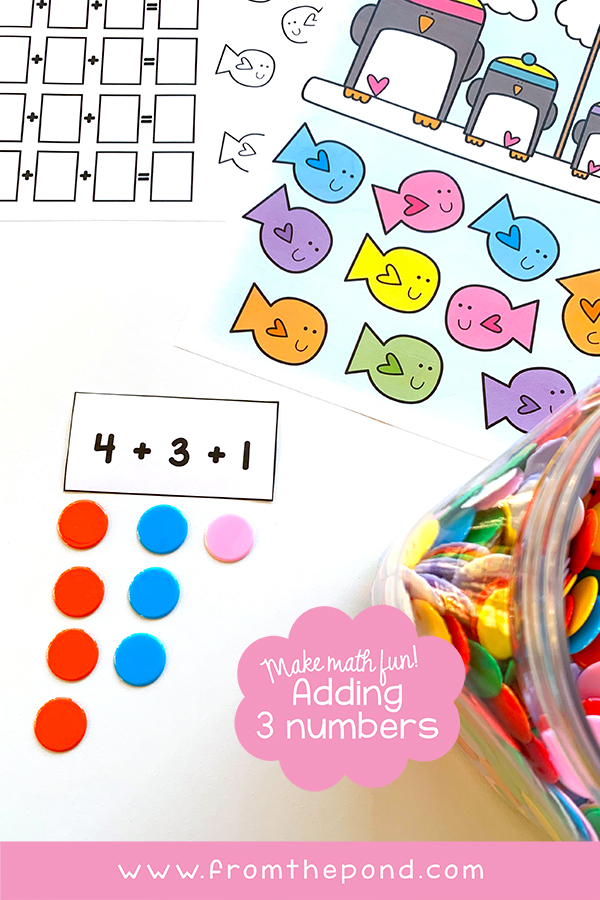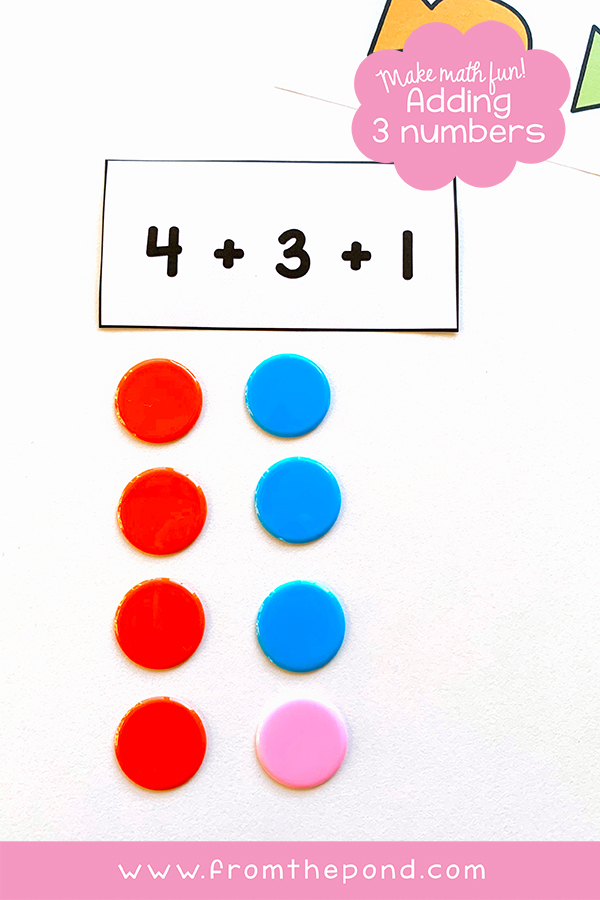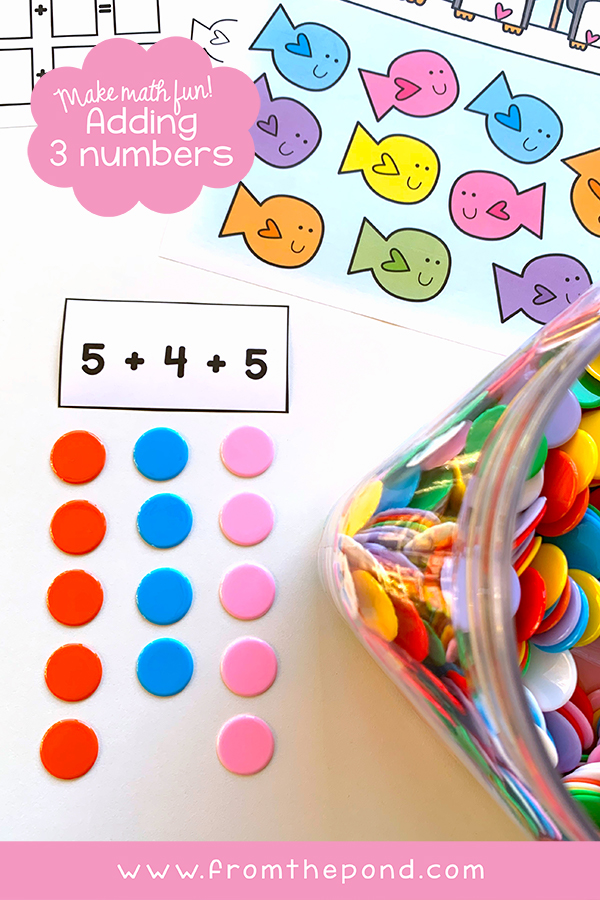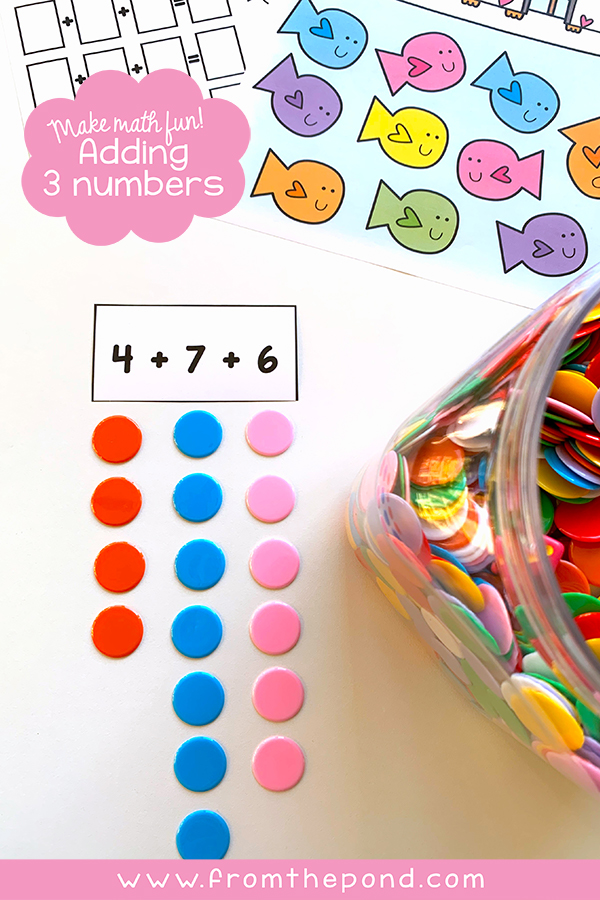Engage your students in a fun math game for Adding 3 Numbers. Perfect for First Grade this activity can be used in math centers, group rotations, workshop or independent learning activities.
Students will have their own game mat and take turns to flip an addition card and find the total.
To find the total you may observe that they:
- are using known addition facts - e.g. they instantly know that 4+3 = 7
- use an addition strategy - e.g. the doubles strategy, one more than strategy, friends-of-ten, or near-doubles strategy
- can partition of 2 numbers from anywhere within the problem, solve this part and then add on the rest
- are at an emergent level of addition and are counting from 1, adding from left to right or using their fingers/tapping fingers under the desk
If a player answers the problem correctly, they may cover a fish with a counter. 9+9+9 is the largest sum.
Included is:
- page size game board
- addition cards
- recording worksheet
- cover page (great for organizing your equipment and resources)
Mini Lesson to help students recall strategies
If you find some students at an emergent level after teaching the addition strategies, use the opportunity when playing this game to help them access them.Below we see 4+3+1. Use counters to show the 3 parts in different colors. Show students how easy it is to solve 3+1 by sliding the counter down into the blue column. Tell them to recall the 'one more' or 'count on one' strategy. This creates 4+4 and remind them of the doubles strategy, totalling 8.
Here in 5+4+5 show them how the double 5 can be solved first and then the additional 4 added on quickly (either counting-on, or using knowledge of place value - 1 ten, 4 ones).
4+7+6 can encourage a reflection to the 'friends of ten' strategy (6+4=10) or the near-doubles strategy (7+6= 6+6+1= 13)We always suggest playing a variety of math games to teach and apply skills and concepts in math. Ideally, students should have many opportunities to apply the strategies you have introduced. They won't have a deep understanding of them until they have used them practically. Try to allow students at least 2 opportunities to play each game, or even 3.
We suggest a 3 day structure for math games:
- Monday - introduce the game, becoming familiar, have a quick go
- Wednesday - playing without the burden of learning rules etc
- Friday - playing with confidence, opportunity to apply new learnings, student feeling successful
You can find 3 Penguins over in our store
If you need some resources for introducing the addition strategies for kindergarten and first grade, you will love our Math Packs.

